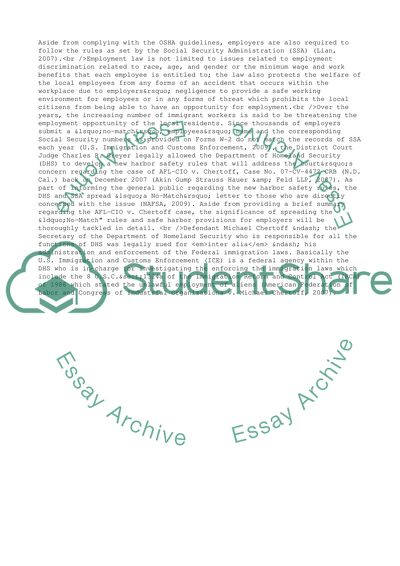Cite this document
(DHS No-Match Coursework Example | Topics and Well Written Essays - 1750 words, n.d.)
DHS No-Match Coursework Example | Topics and Well Written Essays - 1750 words. https://studentshare.org/management/1554260-dhsno-machrules-and-safe-harbor-provisions-for-employers
DHS No-Match Coursework Example | Topics and Well Written Essays - 1750 words. https://studentshare.org/management/1554260-dhsno-machrules-and-safe-harbor-provisions-for-employers
(DHS No-Match Coursework Example | Topics and Well Written Essays - 1750 Words)
DHS No-Match Coursework Example | Topics and Well Written Essays - 1750 Words. https://studentshare.org/management/1554260-dhsno-machrules-and-safe-harbor-provisions-for-employers.
DHS No-Match Coursework Example | Topics and Well Written Essays - 1750 Words. https://studentshare.org/management/1554260-dhsno-machrules-and-safe-harbor-provisions-for-employers.
“DHS No-Match Coursework Example | Topics and Well Written Essays - 1750 Words”. https://studentshare.org/management/1554260-dhsno-machrules-and-safe-harbor-provisions-for-employers.


